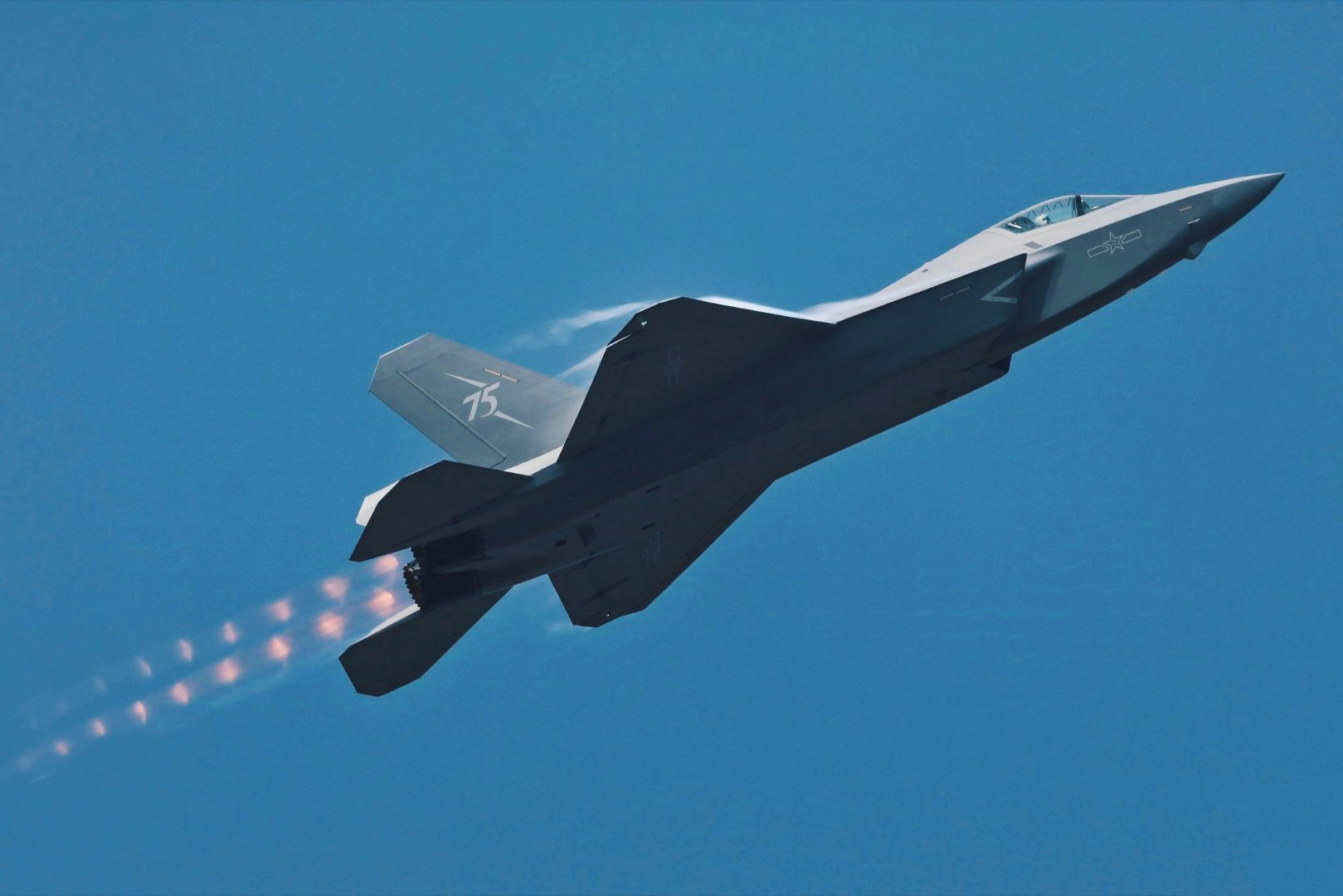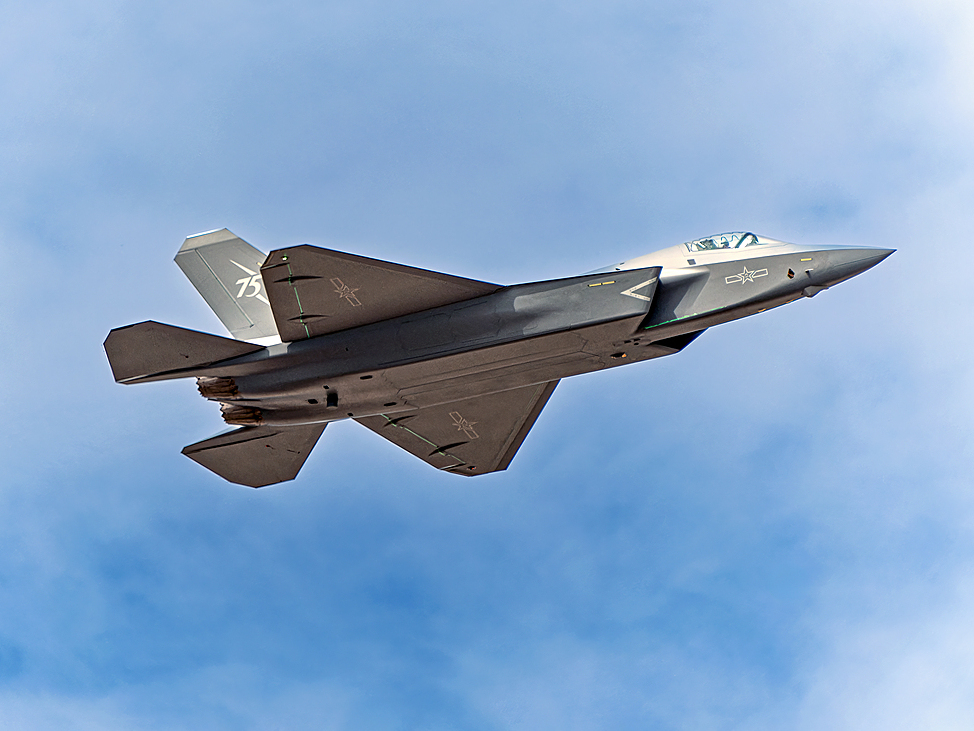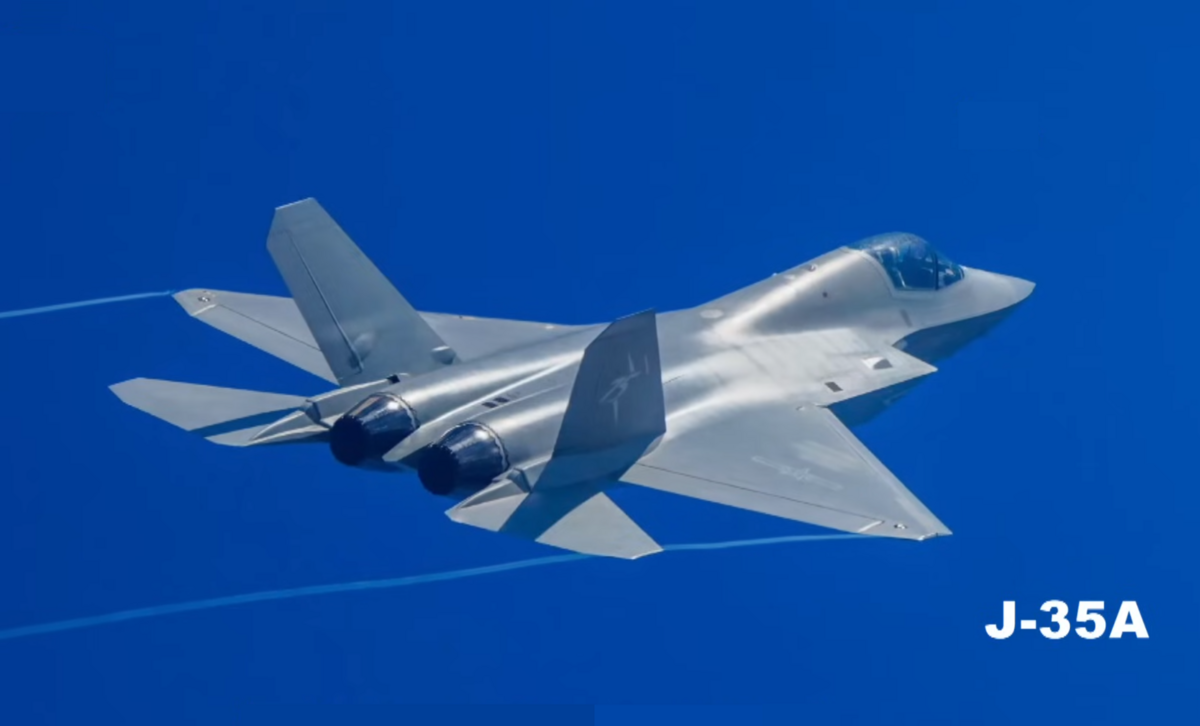AVIC Releases Image of Pakistan Air Force Pilot Inside J-35A Stealth Fighter Cockpit
The caption accompanying the image on AVIC’s official channel simply reads: “Buyers gives good reviews,” offering subtle confirmation of the delivery agreement.
(DEFENCE SECURITY ASIA) — In a striking development underscoring deepening military ties between Islamabad and Beijing, a recent social media post by China’s Aviation Industry Corporation (AVIC) has revealed a Pakistani Air Force (PAF) pilot seated inside the cockpit of the J-35A fifth-generation stealth fighter.
The image, published days ago, has further cemented reports that Pakistan has officially acquired the J-35A stealth fighter, marking a major strategic shift in South Asia’s aerial power balance.
It also suggests that PAF pilots are already in China undergoing operational training on the advanced fifth-generation platform, as previously reported by local defence media.
The caption accompanying the image on AVIC’s official channel simply reads: “Buyers gives good reviews,” offering subtle confirmation of the delivery agreement.
Earlier this month, the Pakistani government publicly confirmed its decision to acquire the J-35A stealth fighter, the KJ-500 airborne early warning and control (AEWC) aircraft, and the long-range HQ-19 air defence system.
“The Chinese military package to Pakistan is a testament to the diplomatic and defence successes under Prime Minister Shehbaz Sharif,” the government announcement read.
“These high-technology military assets will significantly boost the capabilities of the Pakistan Air Force and national air defence systems in line with the demands of modern warfare.”

Beijing’s strategic military assistance arrives at a crucial juncture, especially in the wake of heightened tensions following recent skirmishes between Pakistan and India.
The J-35A, developed by Shenyang Aircraft Corporation (SAC)—a subsidiary of AVIC—is China’s second indigenously developed fifth-generation fighter aircraft after the J-20 “Mighty Dragon.”
According to credible reports, China is expected to deliver the first batch of these low-observable stealth fighters to the Pakistan Air Force within the coming months.
Earlier reporting by Defence Security Asia indicated that Beijing is expediting the delivery of the J-35A to ensure Pakistan receives the aircraft by the first quarter of 2026.
Citing sources within the Pakistan Air Force, the report stated that China had agreed to accelerate the J-35A delivery schedule by six months to reinforce Pakistan’s strategic deterrent posture.
Pakistan is expected to operate a fleet of approximately 40 J-35A fighters, making it the first foreign operator of China’s fifth-generation combat aircraft.
Senior Pakistani government officials told defence outlet Janes that the delivery of the J-35A to Islamabad will take place in “the coming months.”
“Pakistani Air Force pilots are already in China undergoing training to fly and operate the J-35A,” the senior official confirmed to Janes, further validating the rapid operational integration timeline.

Additional reports suggest that the upcoming J-35A units to be delivered to Pakistan will be equipped with China’s next-generation beyond-visual-range air-to-air missile (BVRAAM), the PL-17.
The PL-17, also known in some circles as the PL-XX, is China’s most advanced very-long-range air-to-air missile (VLRAAM), believed to be capable of striking airborne targets at ranges exceeding 400 kilometers.
Designed to enable the People’s Liberation Army Air Force (PLAAF) to engage high-value airborne assets such as AWACS, aerial tankers, and electronic warfare aircraft from extreme standoff distances, the PL-17 significantly enhances China’s long-range aerial interception doctrine.
Reports indicate the PL-17 incorporates a multi-mode seeker combining active radar, infrared sensors, and satellite navigation, allowing for mid-course correction and high-precision terminal guidance—placing it among the most lethal air-to-air missiles in development globally.
Hints of Pakistan’s intentions to acquire the J-35A stealth fighter emerged as early as 2024.
That year, Air Chief Marshal Zaheer Ahmad Babar Zaheer stated publicly that the J-35A would soon enter operational service with the Pakistan Air Force.
“Negotiations have already taken place for the acquisition of the J-35A, which will soon become part of the Pakistan Air Force,” he declared at the time.

Pakistani media also reported that the air force had begun sending its pilots to China to undergo specialized training on the J-35A platform, affirming that the South Asian nation is actively preparing to field its first fifth-generation combat aircraft.
The J-35A is a twin-engine, single-seat stealth fighter designed specifically for the export market.
It is intended to serve as a lower-cost alternative to the American F-35, offering radar-evading design, internal weapons carriage, and multi-role capabilities at a more accessible price point.
The fighter plays a crucial role in China’s broader push to refine its fifth-generation combat aircraft design and export it to partner nations aligned with Beijing’s strategic interests.
Earlier prototypes of the J-35A were believed to be powered by the Russian-made RD-93 engines—also used in the JF-17—but more recent variants have reportedly transitioned to China’s domestically developed WS-13E engines, delivering improved thrust and efficiency.
Informed by the J-35A’s stealthy airframe and modular architecture, China has also developed a carrier-capable variant of the aircraft, designated the J-35, tailored for naval operations from People’s Liberation Army Navy (PLAN) aircraft carriers.
The J-35A reflects China’s broader ambition to modernize its military aerospace capabilities and challenge U.S. dominance in the global airpower landscape.
Equipped with a low-observable design, advanced sensor fusion, and full integration into network-centric warfare environments, the J-35A is envisioned as a critical node within a layered air defence architecture.



Ne Hao, Wan see, Xie Xie No.
I running out of my mandrian, these are too few words to show our sincere gratitude dear old friend, loving neighbour & comrade in arms. Bless PRC.
Ne Hao, Wan see, Xie Xie No.
I running out of my mandrian, these are too few words to show our sincere gratitude dear old friend, loving neighbour & comrade in arms. Bless PRC.